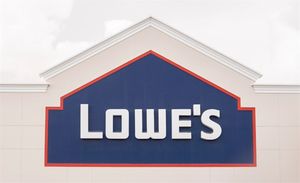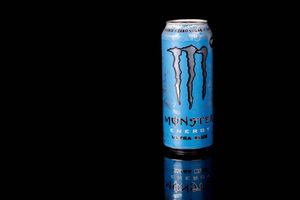SHELTON, CT / ACCESSWIRE / June 24, 2024 / NanoViricides, Inc. (NYSE Amer.:NNVC) (the "Company"), a clinical stage global leader in broad-spectrum antiviral nanomedicines, comments that the ultra-broad-spectrum antiviral NV-387 could be an important weapon against bird flu H5N1 viruses.
NanoViricides has recently found that its host-mimetic clinical drug candidate NV-387 was substantially superior to the three approved drugs against influenza, namely Oseltamivir (Tamiflu®, Roche), Peramivir (Rapivab®, Biocryst), and Baloxavir (Xofluza®, Shionogi, Roche) in a lethal animal model study of Influenza A/H3N2 virus lung infection.
Further, in this study, NV-387 was also found to protect the lungs of the infected animals from viral damage as well as immune system damage, supporting a strong antiviral effect.
These results have arrived just as the bird flu H5N1 threat potential has increased significantly due to its spread into several mammalian species. While dairy cattle have suffered relatively mild infections, some other mammals, particularly cats on farms have died of brain infection with this virus. Only four human cases have occurred so far with one person dying in Mexico, while the three other cases all in the USA have recovered.
NV-387 is anticipated to be a strong drug candidate that would remain effective against HPAI H5N1 even as significant mutations occur. This is because of two main reasons:
The Multi-Basic Site (MBS) in the H5. All HPAI possess a MBS in the H5 which is highly positively charged. The MBS enables strong interaction with sulfated proteoglycans ("S-PG"). Since NV-387 is a host-mimetic of S-PG, it is expected that NV-387 would have a strong effect against the MBS-carrying HPAI H5N1.
The broad-spectrum activity of NV-387. NV-387 is active against many very different viruses including Influenza A, RSV, COVID, Seasonal Coronaviruses, and even Poxviruses. This is because of its host-mimetic feature that copies the invariant attachment site common to all of these viruses, the S-PG. The HPAI H5N1 also uses S-PG for attachment, possibly more profoundly than H3N2, because of the MBS in HPAI. Thus NV-387 is likely to continue to work against the HPAI H5N1 despite mutations that cause resistance to other drugs.
In contrast, very few single-point mutations could make the HPAI H5N1 virus resistant to the existing drugs.
Only as few as five mutations in the HA (hemagglutinin) protein of this virus could enable it to gain the ability to efficiently infect humans, and this could lead to a pandemic with much greater fatality rates than with COVID, according to Dr. Redfield, ex-Director of CDC as reported in a NewsNation interview (https://www.newsnationnow.com/health/ex-cdc-director-bird-flu-pandemic/). Bird Influenza viruses use a-2,3-sialic acid receptors whereas human influenza viruses use a-2,6-sialic acid receptors to gain entry into cells. Viruses typically concentrate at heparan sulfate or sulfated proteoglycans (S-PG) prior to gaining cell entry.
Influenza viruses have a high rate of mutations, and further they can mix-and-match the eight segments of genome from other influenza viruses, called re-assortment, or pick portions of these segments, called recombination.
A safe and effective antiviral drug that the virus would not escape by simple mutations or field evolution is the holy grail of antiviral drug development. We believe that the NanoViricides Platform technology meets this challenge.
NanoViricides, Inc. (the "Company") (www.nanoviricides.com) is a development stage company that is creating special purpose nanomaterials for antiviral therapy. The Company's novel nanoviricide® class of drug candidates are designed to specifically attack enveloped virus particles and to dismantle them. Our lead drug candidate is NV-CoV-2 for the treatment of RSV, COVID-19, Long COVID, and other respiratory viral infections. Our other advanced candidate is NV-HHV-1 for the treatment of Shingles (previously referred to as NV-HHV-101). The Company cannot project an exact date for filing an IND for any of its drugs because of dependence on a number of external collaborators and consultants. The Company is currently focused on advancing NV-CoV-2 into Phase I/II human clinical trials.
NV-CoV-2 is our nanoviricide drug candidate for COVID-19 that does not encapsulate remdesivir. NV-CoV-2-R is our other drug candidate for COVID-19 that is made up of NV-CoV-2 with remdesivir encapsulated within its polymeric micelles. The Company believes that since remdesivir is already US FDA approved, our drug candidate encapsulating remdesivir is likely to be an approvable drug, if safety is comparable. Remdesivir is developed by Gilead. The Company has developed both of its own drug candidates NV-CoV-2 and NV-CoV-2-R independently.
The Company is also developing drugs against a number of viral diseases including oral and genital Herpes, viral diseases of the eye including EKC and herpes keratitis, H1N1 swine flu, H5N1 bird flu, seasonal Influenza, HIV, Hepatitis C, Rabies, Dengue fever, and Ebola virus, among others. NanoViricides' platform technology and programs are based on the TheraCour® nanomedicine technology of TheraCour, which TheraCour licenses from AllExcel. NanoViricides holds a worldwide exclusive perpetual license to this technology for several drugs with specific targeting mechanisms in perpetuity for the treatment of the following human viral diseases: Human Immunodeficiency Virus (HIV/AIDS), Hepatitis B Virus (HBV), Hepatitis C Virus (HCV), Rabies, Herpes Simplex Virus (HSV-1 and HSV-2), Varicella-Zoster Virus (VZV), Influenza and Asian Bird Flu Virus, Dengue viruses, Japanese Encephalitis virus, West Nile Virus, Ebola/Marburg viruses, and certain Coronaviruses. The Company intends to obtain a license for poxviruses and/or enteroviruses if the initial research is successful. The Company's technology is based on broad, exclusive, sub-licensable, field licenses to drugs developed in these areas from TheraCour Pharma, Inc. The Company's business model is based on licensing technology from TheraCour Pharma Inc. for specific application verticals of specific viruses, as established at its foundation in 2005.
As is customary, the Company must state the risk factor that the path to typical drug development of any pharmaceutical product is extremely lengthy and requires substantial capital. As with any drug development efforts by any company, there can be no assurance at this time that any of the Company's pharmaceutical candidates would show sufficient effectiveness and safety for human clinical development. Further, there can be no assurance at this time that successful results against coronavirus in our lab will lead to successful clinical trials or a successful pharmaceutical product.
This press release contains forward-looking statements that reflect the Company's current expectation regarding future events. Actual events could differ materially and substantially from those projected herein and depend on a number of factors. Certain statements in this release, and other written or oral statements made by NanoViricides, Inc. are "forward-looking statements" within the meaning of Section 27A of the Securities Act of 1933 and Section 21E of the Securities Exchange Act of 1934. You should not place undue reliance on forward-looking statements since they involve known and unknown risks, uncertainties and other factors which are, in some cases, beyond the Company's control and which could, and likely will, materially affect actual results, levels of activity, performance or achievements. The Company assumes no obligation to publicly update or revise these forward-looking statements for any reason, or to update the reasons actual results could differ materially from those anticipated in these forward-looking statements, even if new information becomes available in the future. Important factors that could cause actual results to differ materially from the company's expectations include, but are not limited to, those factors that are disclosed under the heading "Risk Factors" and elsewhere in documents filed by the company from time to time with the United States Securities and Exchange Commission and other regulatory authorities. Although it is not possible to predict or identify all such factors, they may include the following: demonstration and proof of principle in preclinical trials that a nanoviricide is safe and effective; successful development of our product candidates; our ability to seek and obtain regulatory approvals, including with respect to the indications we are seeking; the successful commercialization of our product candidates; and market acceptance of our products.
The phrases "safety", "effectiveness" and equivalent phrases as used in this press release refer to research findings including clinical trials as the customary research usage and do not indicate evaluation of safety or effectiveness by the US FDA.
FDA refers to US Food and Drug Administration. IND application refers to "Investigational New Drug" application. cGMP refers to current Good Manufacturing Practices. CMC refers to "Chemistry, Manufacture, and Controls". CHMP refers to the Committee for Medicinal Products for Human Use, which is the European Medicines Agency's (EMA) committee responsible for human medicines. API stands for "Active Pharmaceutical Ingredient".
Contact:
NanoViricides, Inc.
info@nanoviricides.com
Public Relations Contact:
MJ Clyburn
TraDigital IR
clyburn@tradigitalir.com
SOURCE: NanoViricides, Inc.
View the original press release on accesswire.com





